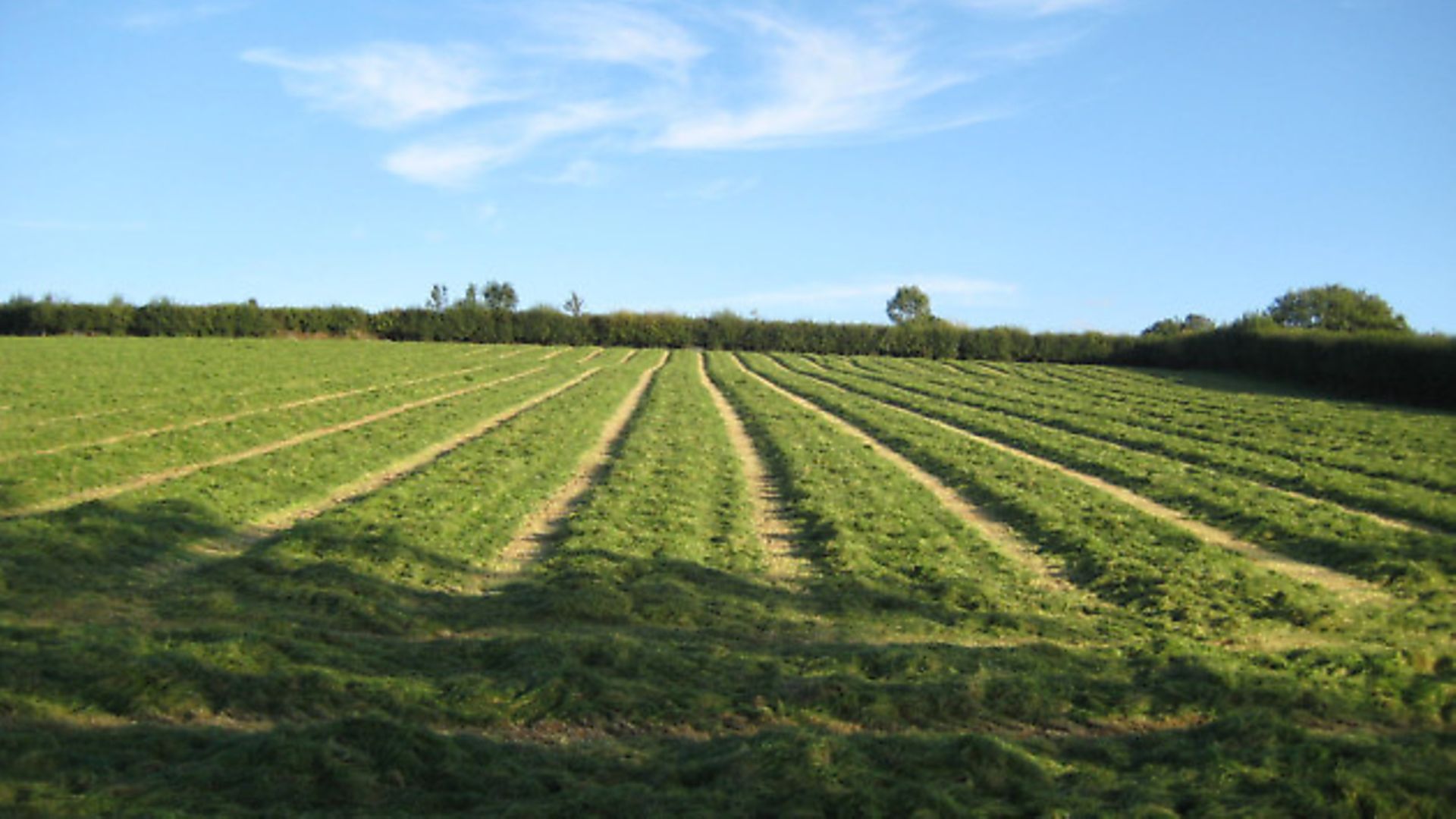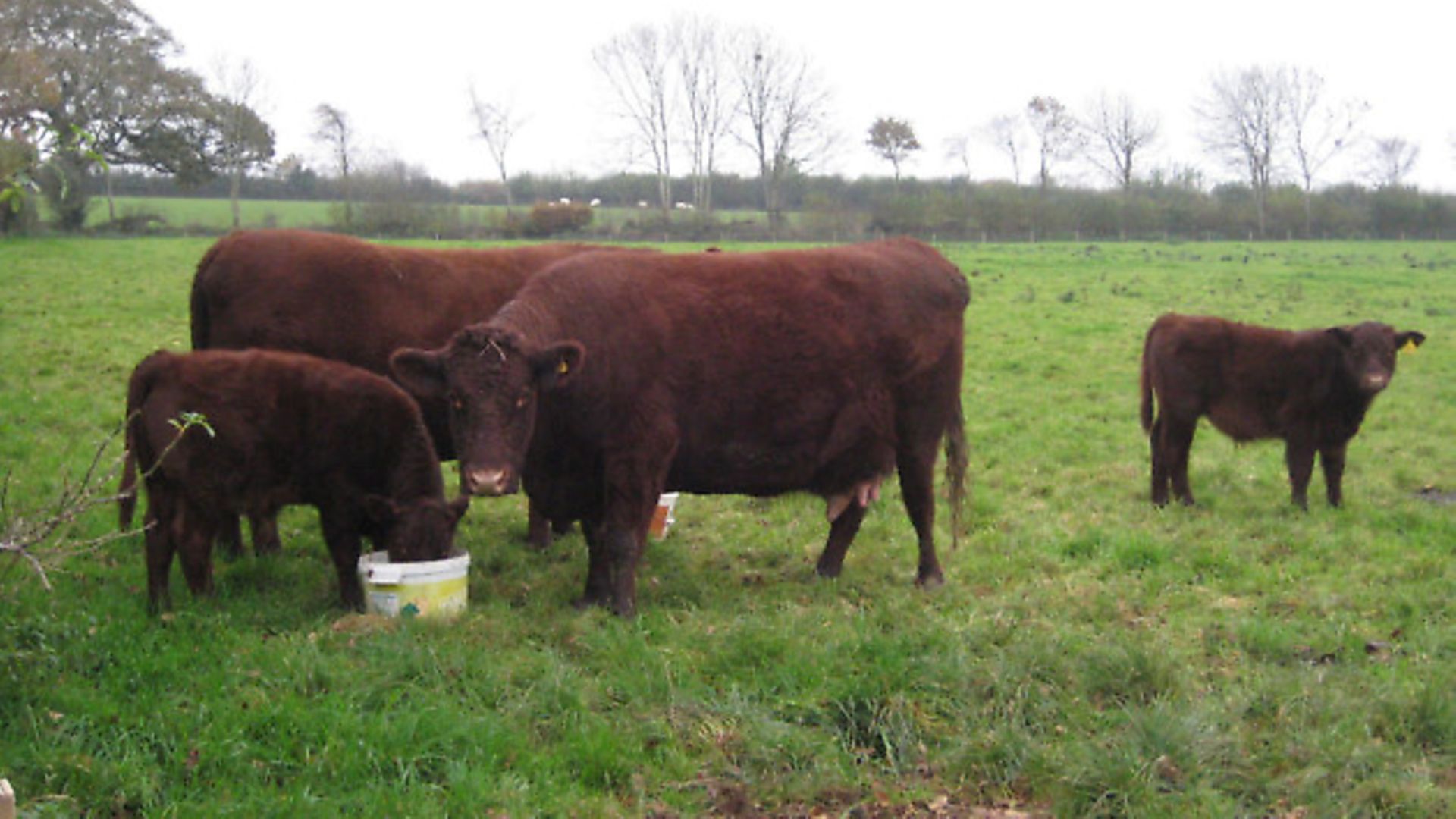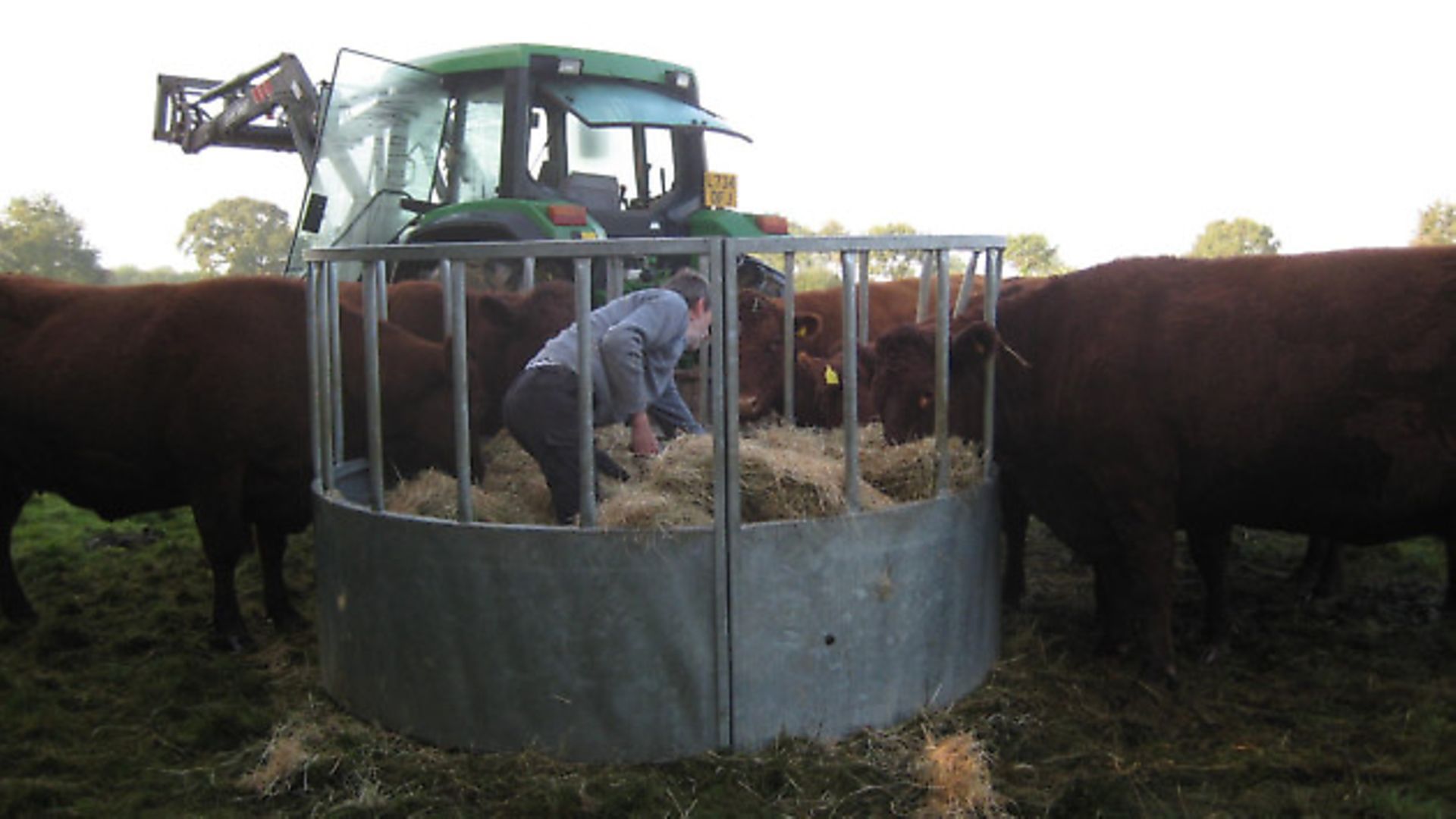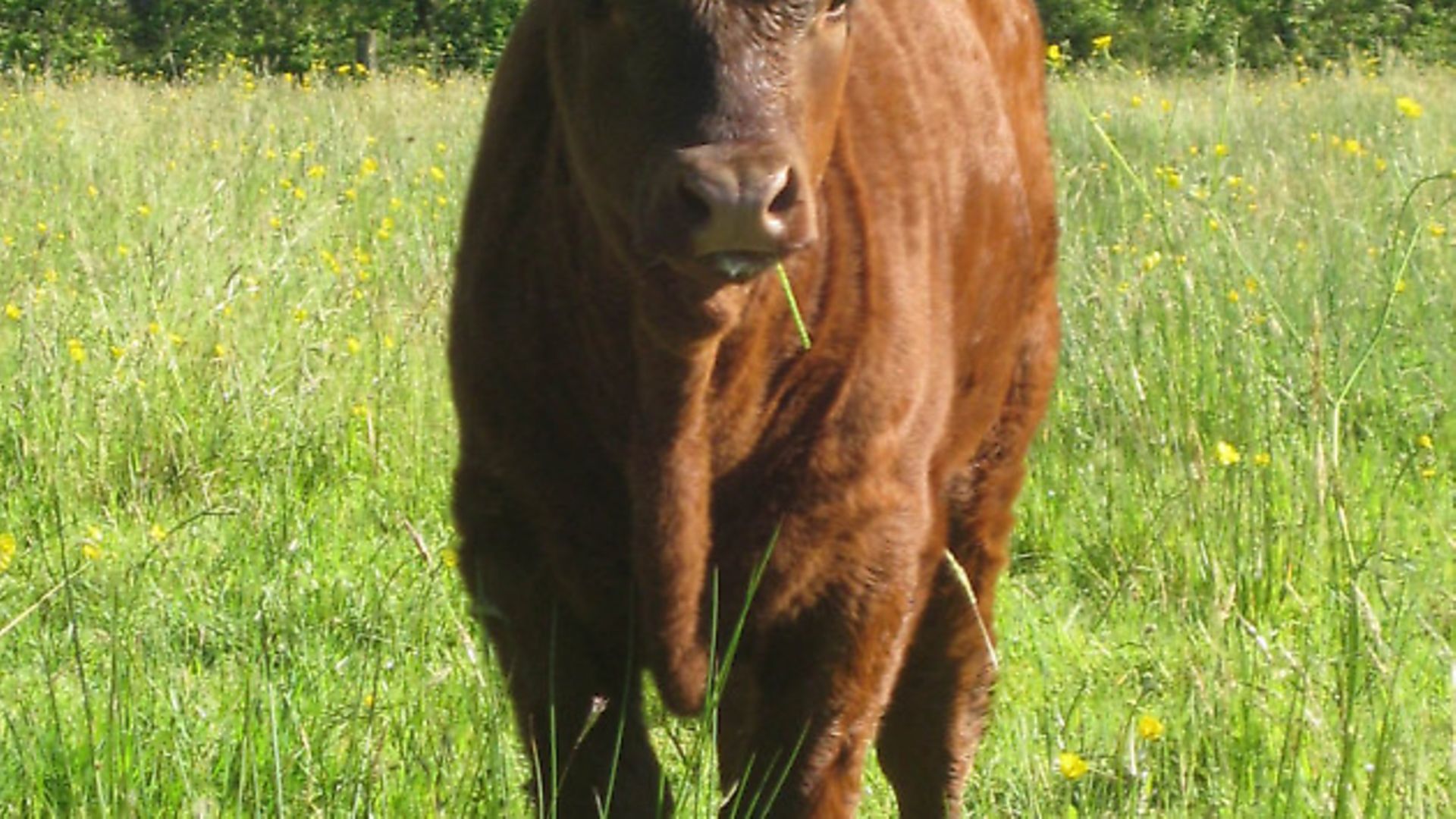In the second of a series of articles on cattle, Debbie Kingsley looks at feeding cows year round – and whether they need more than grass

People do say that Devon Ruby cows thrive on fresh air. This isn’t so much a comment on their love of the great outdoors, rather that they do exceptionally well on poor grazing and will put on too much weight at the slightest opportunity. This is true of many of our native cattle breeds that thrive on marginal grazing, converting what’s available to them with vigour, producing plenty of milk for their calves and laying down whatever stores of fat they can to see them through sparser times. We use our Devon Ruby cows as conservation grazers on some very poor ground as part of our environmental stewardship commitment. We have a real mix of grassland on our holding: the top run is as good a grazing as you’ll find locally, being well drained, sweet grassed pasture; the middle run is wetter and encourages unwelcome patches of soft rush; the lower run is typical culm grassland, very wet indeed with lots of sharp rush, interspersed with a wonderful richness of wild flowers including orchids. Once the orchids and other culm species of wild flowers have flowered and set seed, the cows graze this lower run of fields, ensuring that the light poaching of the purple moor-grass and rush pasture provides suitable conditions for plants to colonise in the following year, particularly for those native plant species that are less competitive and vulnerable to being overrun by the more tenacious grasses and rushes.
For most of the spring, summer and autumn when the cows are outside grazing, we don’t supplement their feed; the cows get quite fat enough on the grass available to them and we sell our beef as grass-fed which is important to our small band of loyal and enthusiastic customers. Recent National Trust research found that the health benefits of beef (and lamb) are greater when animals are fed totally on grass, their natural food. Omega 3 fatty acids, recognised as essential to good physical and mental health, are higher in meat from grass and the levels of saturated fat are a third of that found in grain fed beef. Certainly the flavour and texture of beef that has been slow grown on pasture is far superior to that fed on barley or other grains for quick growth.
But as November appears and the natural sugars in the grass plummets, even if there is a decent sward for the cows (the ideal sward height for cows is 8-10cm), we put out hay or haylage to make sure the cows don’t go backwards and that those with calves have enough nutrition for themselves and for producing milk for their young. People feed cattle outside in various ways: some scatter hay in heaps around the field and others put bales in suitable feeders. We always put hay into large round feeders for the cows as it avoids wastage – cows won’t eat hay that has been spoiled by feet or dunging – and hay is a precious commodity. If we’ve had a wet summer we might be forced to buy in extra hay which is expensive, and if we’ve had a good summer and made lots of our own hay and haylage, we want to conserve it so it can be used in following years if the crop has not been so generous. As soon as the ground is in danger of getting poached, the cows are brought in for the winter.
Forage is the plant material eaten by livestock; the silage, haylage or hay that’s made from grass to feed cows & sheep over the winter months. The difference between them is, as some say, just a matter of time. When the grass is cut it contains 75-85% water. Silage (60-70% moisture) is the first to be harvested just 24 hours after cutting; the grass is chopped and stored in clamps and covered with plastic sheets (and often old tractor tyres) and usually fed to cattle. Haylage is left to dry for longer and gets turned to expose the damp bits to the air. When there is still some but not too much moisture (around 30-40%) in the stems, the haylage is baled and wrapped to stop it fermenting and going mouldy; cattle, sheep and horses love it. And then there’s good old fashioned hay (just 16% moisture), left to dry even longer before baling, and then stored under cover without any wrapping.
We tend to make as much hay as possible – it’s cheaper to make than haylage because it requires no plastic wrapping – but it does require a barn to store it to keep it dry. The wrapping means haylage is normally stored outside, and that’s why we make both; we just don’t have enough barn space to store all the hay we would need to keep the cows over winter.
One of our hay meadows is used a lot by badgers, so we cart and store the bales taken from there separately and keep them solely for use by our sheep; it’s a sensible precaution for minimising the risk of transmission of bovine TB.
Based on overwintering our Devon Ruby cows for up to five months of the year, each cow with its calf will get through approximately twelve large round bales or 120 small hay bales, acknowledging of course that bale sizes and weights can vary hugely depending on who makes it and with what equipment. We make 5-10 large bales or 50-100 small bales per acre depending on quality of grass, soil, weather and previous grazing management. Hay does not need to be eaten in a hurry, but a wrapped haylage bale once opened will last only 5-7 days before it starts to rot which you can tell by the heat that comes off the bale when you handle it. The warmth creates a perfect host for unwelcome bacteria, so any remaining haylage in a hot bale should not be fed but thrown on the muck heap.

There are of course a number of different factors determining the daily intake of a cow: cow weight, breed, forage quality and whether the cow is gestating or lactating. When feeding the same forage, heavier cows will consume more on a daily basis compared to lighter-weight cows as will cows that are lactating.
Because haylage is quite wet it can flow through the cows quite fast – basically we’re looking at sloppy, wet dung, so we often feed a mix of hay and haylage at any one time, the hay mopping up the wet internally and creating a firmer dung, easier to remove with the muck fork and barrow and fewer dung splashes decorating gates and mangers.
So do our cows get anything else to eat other than grass in one form or another? We make sure that they have access to rock salt which they love to lick and comes in big lumpy sacks from exotic points of the world via our local agricultural merchant, with the natural salt rocks varying from dull grey to a lovely rose pink or amber. When housed they also get fed a seaweed supplement which gives them iodine, phosphorus and other necessary trace minerals. In summer when there are flies about we give them a garlic lick which helps keep the flies down, and doesn’t, as some ask, adulterate the taste of the beef.
When they are nine months old, about a month before weaning, the calves get a very small amount of cattle nuts daily. We find this eases the weaning process and we continue with a very small cattle nut feed for the youngsters until they are turned out at grass in the spring, at which point all supplementary feeding stops. If the youngsters are looking a bit fat, we’ll stop even that small quantity of hard feed earlier. And having very long memories, it only takes the shake of a feed sack to get the whole herd to come running when we want them. Cows are eternally optimistic, even if it’s years since they had their last taste of cow nuts.
In future articles I’ll be looking at the realities of overwintering inside and adapting a shed or barn to house your cows, and getting your cows in calf without a bull.
Cattle for Beginners
As part of their range of smallholder courses Debbie and her husband Andrew run a Cattle for Beginners course on their beautiful Devon farm. You’ll spend much of the day with their wonderful suckler herd of Devon Rubies, and you’ll definitely be fed some of their beef for lunch. To check out course details and for more information go to www.smallholdertraining.co.uk/cattle.html or contact Debbie on 01837 810569 or debbie@smallholdertraining.co.uk.


Image(s) provided by:
Archant
Archant
Archant
Archant







